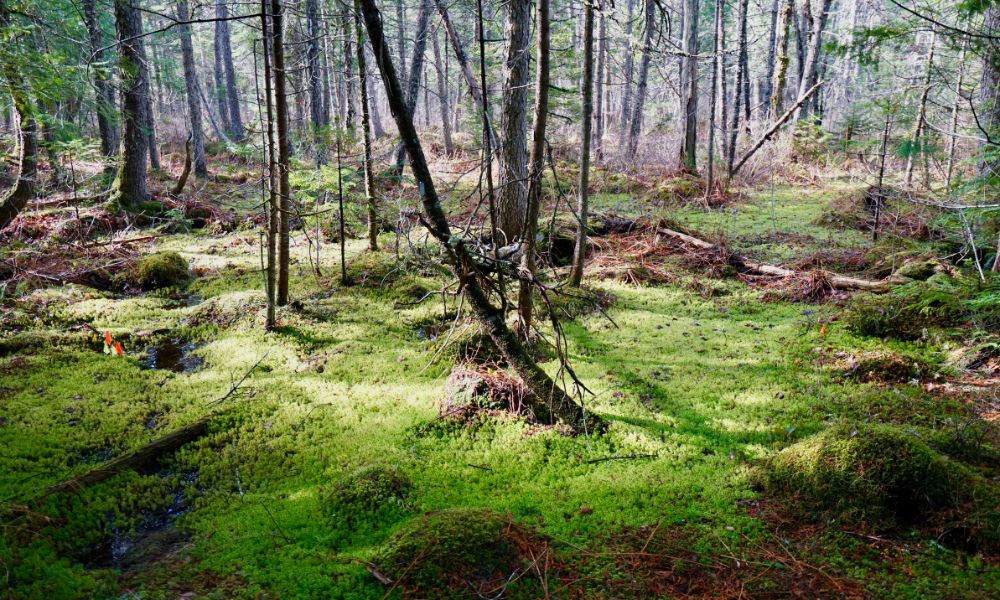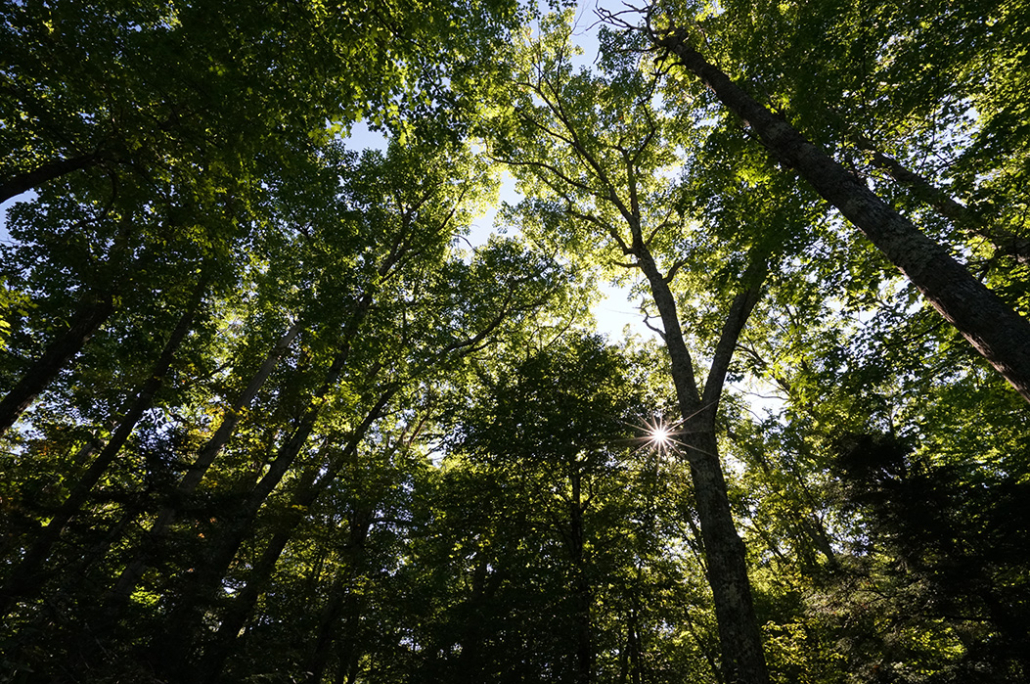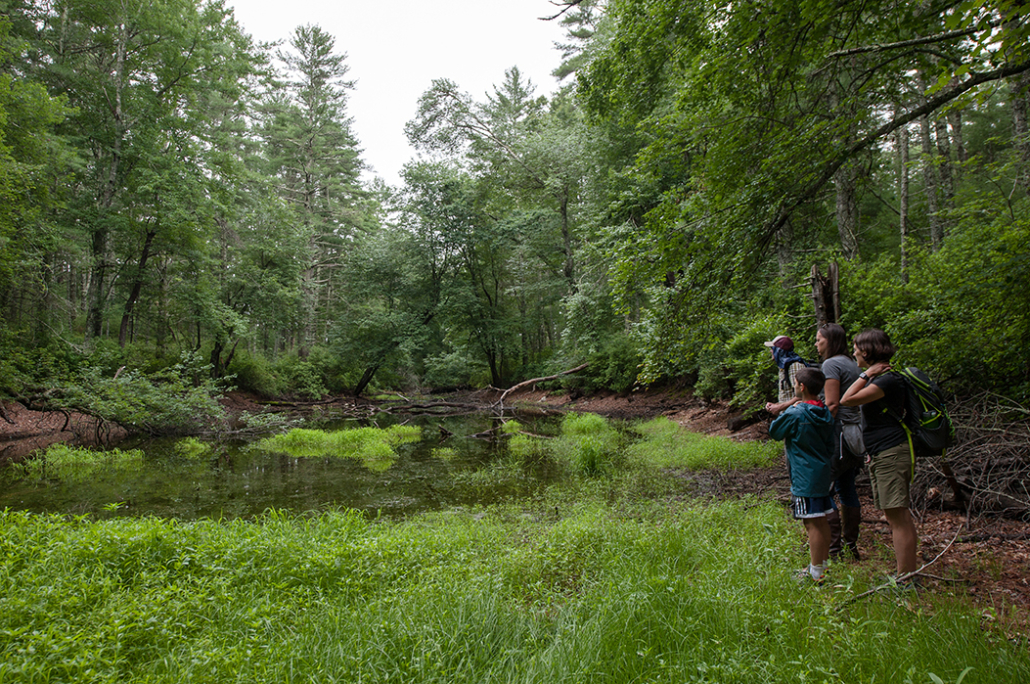The site of the nation’s second-longest running collection of atmospheric carbon data, Howland Research Forest in Howland, ME is a site of invaluable scientific study made possible by its wild state.
In November 2007, the Northeast Wilderness Trust purchased and permanently protected the 550-acre Howland Research Forest. Initially established as a research site in 1987 by the University of Maine in cooperation with International Paper, the Howland Forest has hosted scientists from around the world for studies on forest health and climate change. These scientists now have one of the longest records of carbon intake and output (flux) in the world. The Howland Forest is characterized by old-growth spruce and hemlock and provides habitat for species such as moose, black bear, bobcat, and bald eagle.












